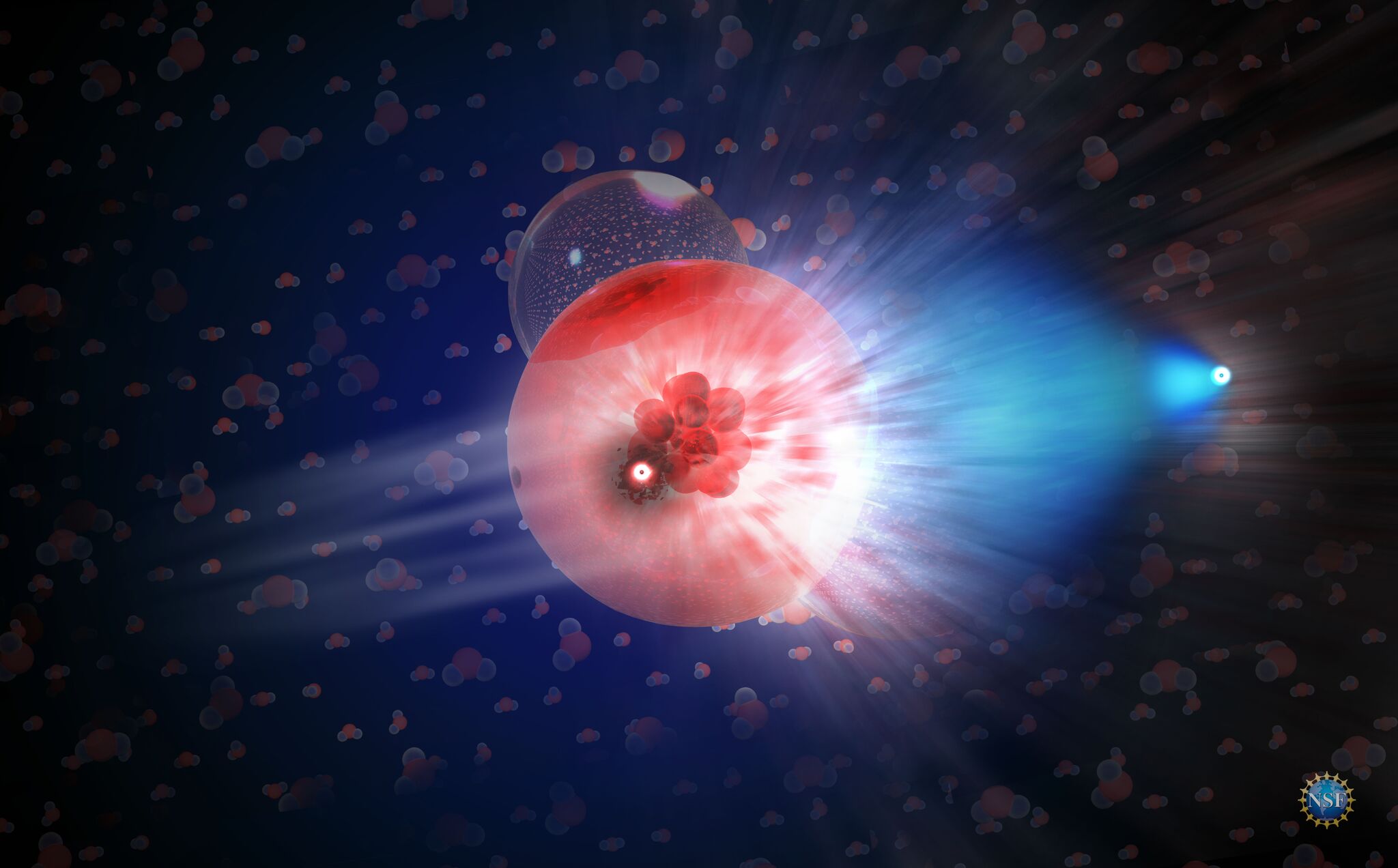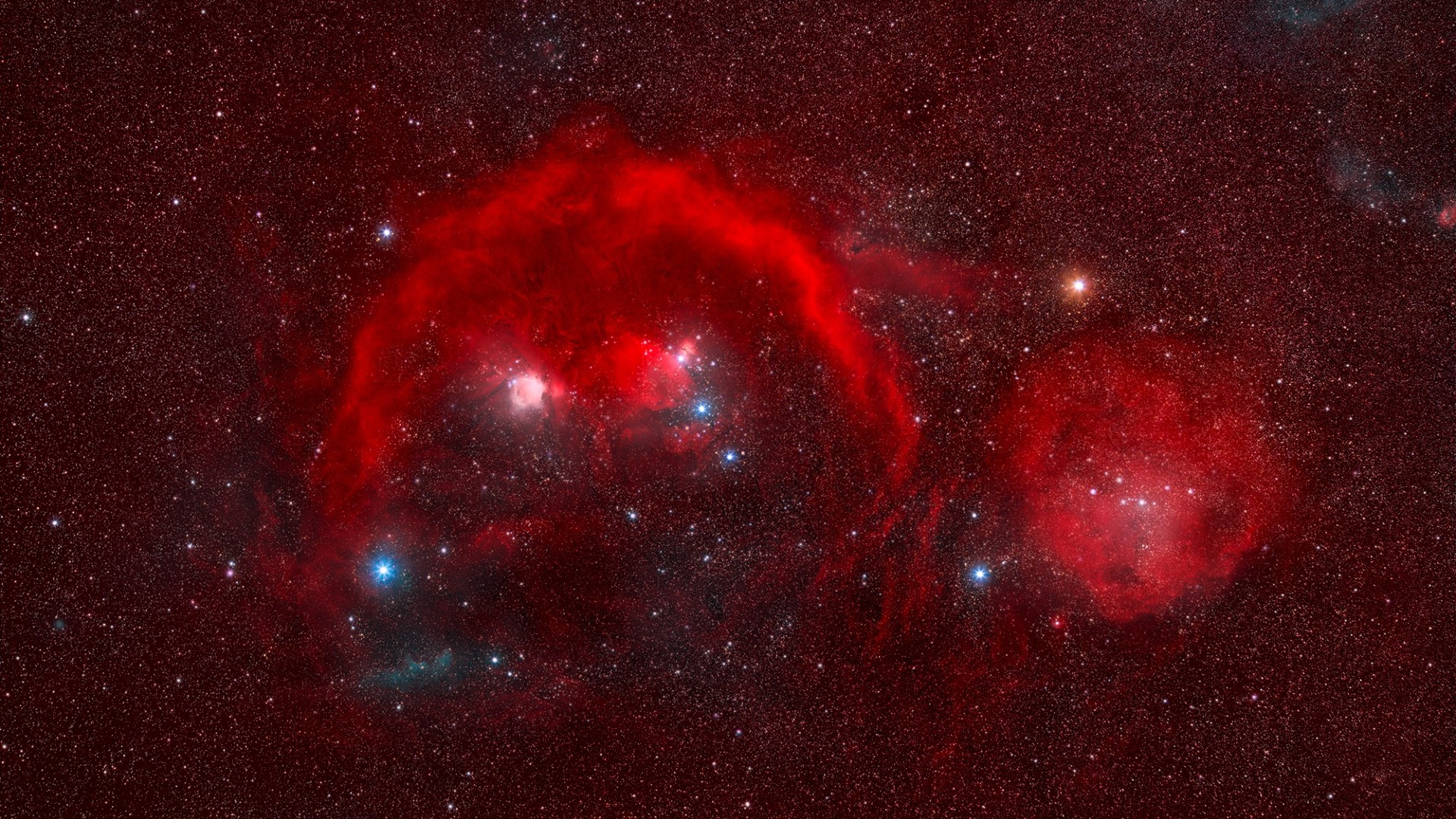Astronomers propose building a neutrino telescope — out of the Pacific Ocean
Meet the ambitious P-ONE proposal.

Paul M. Sutter is an astrophysicist at SUNY Stony Brook and the Flatiron Institute, host of "Ask a Spaceman" and "Space Radio," and author of "How to Die in Space." Sutter contributed this article to Space.com's Expert Voices: Op-Ed & Insights.
Neutrinos are one of the most elusive particles in the cosmos, second only to ultra-mysterious dark matter. They are made in considerable quantity — they participate in the weak nuclear force and they're responsible for nuclear fusion and decay. So any time something nuclear is happening, neutrinos are involved.
For example, the sun's core is a giant nuclear fusion reaction, so naturally, it's producing quite a few neutrinos. If you hold your thumb up to the sun, approximately 60 billion neutrinos will pass through your thumbnail every second, according to past studies.
Related: Where did all the baryons go?
But neutrinos interact so rarely with matter that despite the trillions upon trillions of them passing through your body every second, in your entire life, the total number of neutrinos that will actually hit your body is about … one.
Neutrinos are so ghostly and effervescent that, for decades, physicists assumed that these particles were completely massless, traveling through the universe at the speed of light. But after mountains of evidence began to pile up, scientists discovered that neutrinos do have a tiny amount of mass.
Exactly how much mass is a matter of active scientific research. There are three kinds of neutrinos: the electron neutrino, the muon neutrino and the tau neutrino. Each of these "flavors" participates in different kinds of nuclear reactions, and frustratingly, all three neutrino types have the odd ability to change from one identity to another as they travel. So, even if you do manage to see a neutrino and determine its type, you only know a fraction of what you wish you knew.
Breaking space news, the latest updates on rocket launches, skywatching events and more!
Whispers in water
The mass of neutrinos has no explanation in the Standard Model of particle physics, our current and best theory of fundamental interactions. So physicists would really love to do two things: measure the masses of the three neutrino flavors and understand where those masses come from. That means they have to do lots of experiments.
Most neutrino detectors are pretty straightforward: You either set up a device to generate a ridiculous number of the buggers in a laboratory, or you build a gigantic array to capture some that originate off Earth.
These experiments have made a lot of progress and gotten bigger with every generation. The Kamiokande experiment in Japan, for example, famously detected the neutrinos coming from the supernova 1987A. But they needed a vat of more than 50,000 tons of water to do it.
In recent years, the IceCube Neutrino Observatory in Antarctica has upped the ante. That observatory consists of a solid cubic kilometer (0.24 cubic mile) of ice at the South Pole, with dozens of Eiffel-Tower-sized strands of receivers sunk a kilometer (0.6 mile) into the surface. After a decade of work, IceCube has discovered some of the most energetic neutrinos ever and made tentative steps toward finding their origins. (Hint: It involves really high-energy processes in the universe, like blazars.)
Why do both Kamiokande and IceCube use so much water? A large chunk of pretty much anything can serve as a neutrino detector, but pure water is ideal. When one of the trillions of passing neutrinos happens to strike a random water molecule, it gives off a brief flash of light. The observatories contain hundreds of photoreceptors, and the purity of the water allows those detectors to pinpoint the direction, angle and intensity of the flash very accurately. (If the water had impurities, then it would be difficult to reconstruct where the flash came from within the volume.)
From there, they can reconstruct the original direction of the incoming neutrino and get a handle on its energy.
Related: Massive simulation of the universe probes mystery of ghostly neutrinos
The great Pacific neutrino patch
This is all well and good for normal, everyday neutrinos. But the most energetic neutrinos are extraordinarily rare. Those extremely rare neutrinos are also the most exciting and interesting, however, because they can be caused only by the most gargantuanly powerful events in the universe.
Unfortunately, the entire might of IceCube, after a decade of observation, has been able to capture a mere handful of these ultra-powerful neutrinos.
So we're gonna need a bigger boat … I mean, detector.
This is the idea behind the Pacific Ocean Neutrino Experiment (P-ONE), a new proposal described in a paper published to the preprint server arXiv in November: to turn a massive swath of the Pacific Ocean into nature's own neutrino detector.
Once again, the concept is surprisingly simple: Find a suitable, lonely part of the Pacific. Pretty easy. Construct long strands of photodetectors — and I mean long, at least a kilometer long. Sink these strands to the bottom of the ocean, preferably to a depth of over a mile (2 km). Attach floats to them so they stand upright in the water, like giant mechanical kelp.
The P-ONE design currently involves seven 10-string clusters, with each string hosting 20 optical elements. That"s a grand total of 1,400 photodetectors floating around an area of the Pacific several miles across, providing much more coverage than IceCube.
Once it's up and running, you just need to wait. Even neutrinos will strike some ocean water and give off a little flash, and the detectors will trace it.
Of course, it's harder than it sounds. The strands will be moving constantly, waving back and forth with the ocean itself. And the Pacific Ocean is … less than pure, with salt and plankton and all manner of fish excrement floating around. That will change the behavior of light between the strands, making precise measurement difficult.
That means the experiment will require constant calibration to adjust for all these variables and reliably trace neutrinos. The team behind P-ONE is on the case, however, and already has plans to build a smaller, two-strand demo as a proof of concept.
And then, we can go neutrino hunting.
Follow us on Twitter @Spacedotcom and on Facebook.
Join our Space Forums to keep talking space on the latest missions, night sky and more! And if you have a news tip, correction or comment, let us know at: community@space.com.

Paul M. Sutter is a cosmologist at Johns Hopkins University, host of Ask a Spaceman, and author of How to Die in Space.
